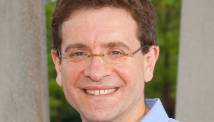2012: The year in pictures
2012: The year in pictures
2012: The year in pictures
2012: The year in pictures
2012: The year in pictures
2012: The year in pictures
2012: The year in pictures
2012: The year in pictures
2012: The year in pictures
2012: The year in pictures
2012: The year in pictures
2012: The year in pictures
2012: The year in pictures
2012: The year in pictures
2012: The year in pictures
2012: The year in pictures
2012: The year in pictures
2012: The year in pictures
2012: The year in pictures
2012: The year in pictures
2012: The year in pictures
2012: The year in pictures
2012: The year in pictures
2012: The year in pictures
2012: The year in pictures
2012: The year in pictures
2012: The year in pictures
2012: The year in pictures
2012: The year in pictures
2012: The year in pictures
2012: The year in pictures
2012: The year in pictures
2012: The year in pictures
2012: The year in pictures
2012: The year in pictures
2012: The year in pictures
2012: The year in pictures
2012: The year in pictures
2012: The year in pictures
2012: The year in pictures
2012: The year in pictures
2012: The year in pictures
2012: The year in pictures
2012: The year in pictures
2012: The year in pictures
2012: The year in pictures
2012: The year in pictures
2012: The year in pictures
2012: The year in pictures
2012: The year in pictures
2012: The year in pictures
2012: The year in pictures
2012: The year in pictures
2012: The year in pictures
2012: The year in pictures
2012: The year in pictures
2012: The year in pictures
2012: The year in pictures
2012: The year in pictures
2012: The year in pictures
2012: The year in pictures
2012: The year in pictures
2012: The year in pictures
2012: The year in pictures
2012: The year in pictures
2012: The year in pictures
2012: The year in pictures
2012: The year in pictures
2012: The year in pictures
2012: The year in pictures
2012: The year in pictures
2012: The year in pictures
2012: The year in pictures















